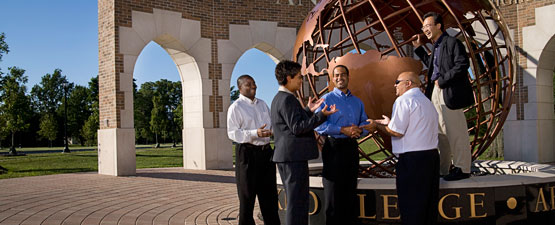Professional Dissertations DMin
Date of Award
2023
Document Type
Dissertation
Degree Name
Doctor of Ministry
College
Seventh-day Adventist Theological Seminary
Program
Doctor of Ministry DMin
First Advisor
James Wibberding
Second Advisor
Barry Tryon
Third Advisor
Joseph Kidder
Abstract
Problem
Like many other churches, ongoing tension between generations resulting in conflict or segregation in the Lacey Seventh-day Adventist Church necessitated further research to develop a strategy to foster maximum congregational buy-in that would reverse these natural tendencies and aid in developing a desire to be intentionally intergenerational. With minimal denominational research extant, an approach that aided members in seeing evidence from within their own congregation was necessary. Additionally, a biblical foundation that included an eschatological framework within the traditional paradigms and a historicist view that placed intentional intergenerational methods as needed in the last days was also needed to garner buy-in from the older generations.
Method
A mixed methods approach that leaned heavily on the Participatory Action Research (PAR) model was utilized. Because there was a need to garner buy-in from all generations, participation from all generations throughout the decision-making process was necessary. To track progress in increased intergenerationality, traditional research based surveys were taken before, during, and after all project implementation stages. Ultimately, this data did not give a clear indication that would quantify the results as statistically significant independently. The success, or lack thereof, weighed primarily on the PAR. The direct verbal feedback from those who participated in the intergenerational worship committee and those who gave unsolicited feedback became primary evidence indicating success. Additionally, long-term changes in how the church leadership and members planned services and activities to be intentionally intergeneration were markers of success.
Results
The collective research and implementation results showed a noticeable difference in generational interaction being more positive and a move towards a desire or culture of generational inclusion in most services and activities. This came from a theological and personal experience blend of information and activities implemented.
Conclusions
In conclusion, the research implementations at the Lacey Seventh-day Adventist Church showed reasonable success in harnessing generational buy-in to develop an intentionally intergenerational church culture. The generational conflict was diminished as members experienced transformational learning regarding generational inclusion. As a result, services and activities have become more generationally inclusive and promotes a healthier model of church that improves spiritual growth.
Subject Area
Intergenerational relations--Religious aspects--Seventh-day Adventists; Intergenerational communication--Religious aspects--Seventh-day Adventists; Lacey Seventh-day Adventist Church (Lacey, Wash.); Seventh-day Adventists--Washington--Lacey
Recommended Citation
Canfield, Jason, "Strategy Implemented for Intentional Intergeneration Interaction at the Lacey Seventh-day Adventist Church" (2023). Professional Dissertations DMin. 797.
https://digitalcommons.andrews.edu/dmin/797
Creative Commons License

This work is licensed under a Creative Commons Attribution-NonCommercial-No Derivative Works 4.0 International License.



